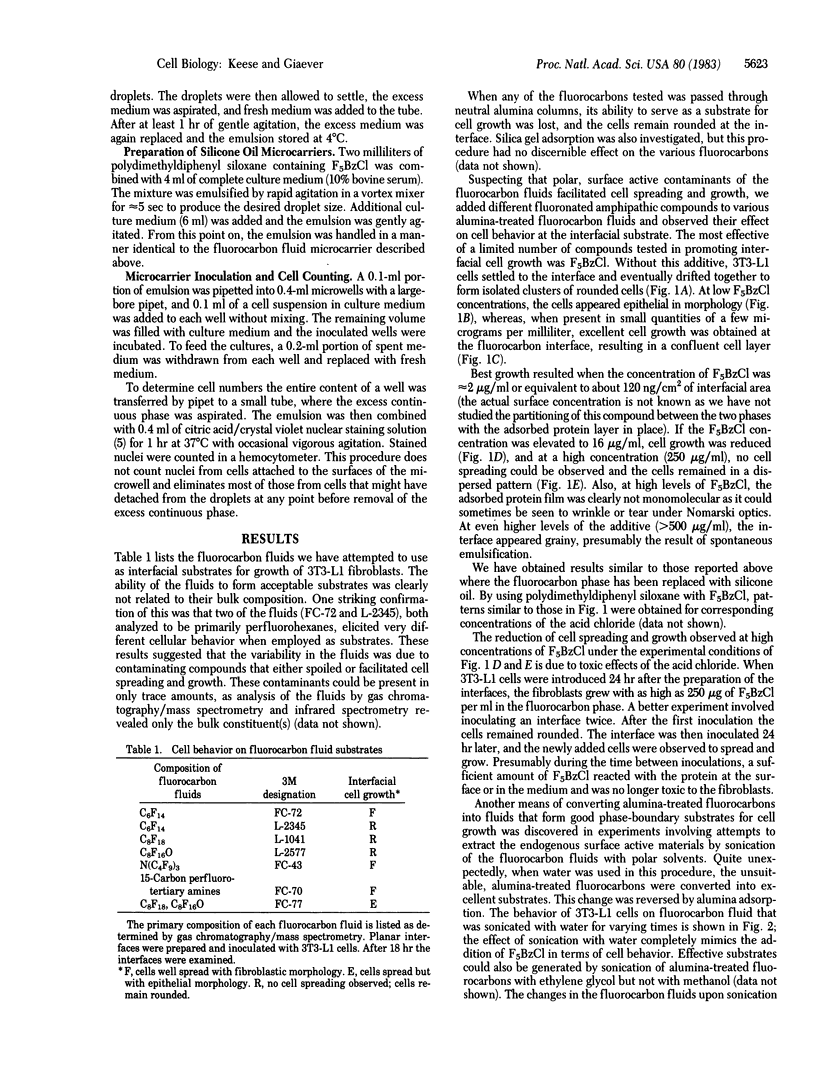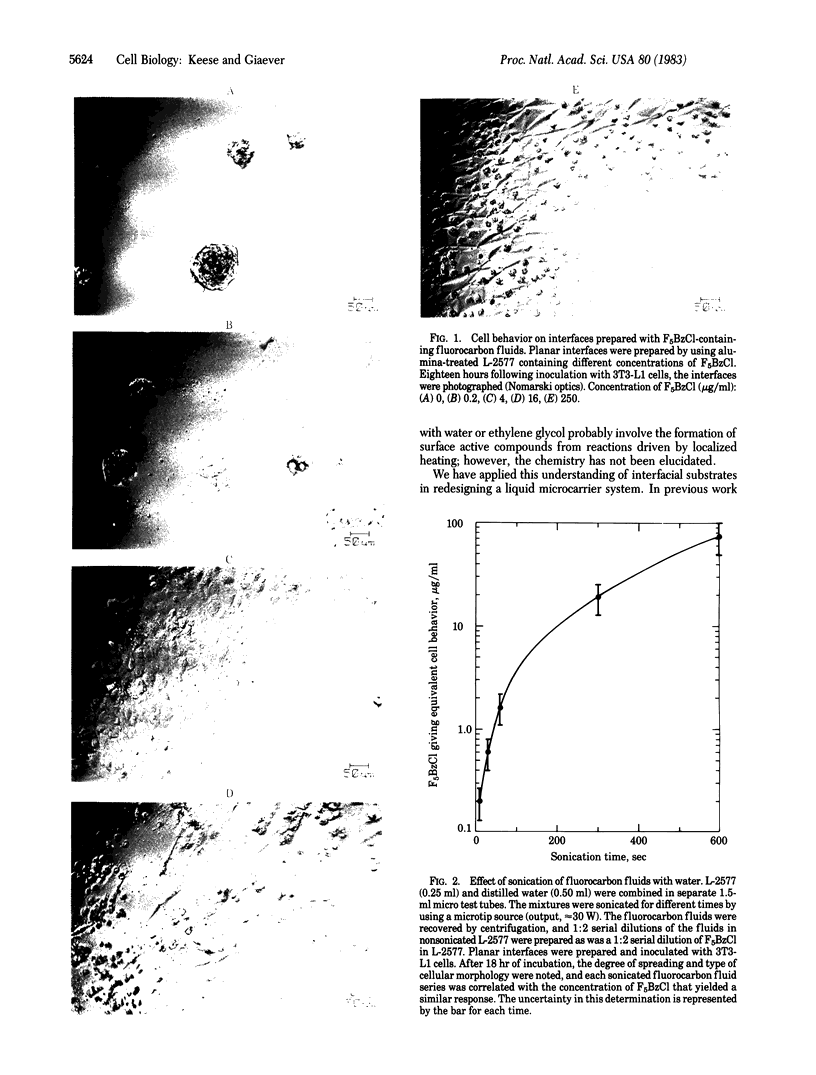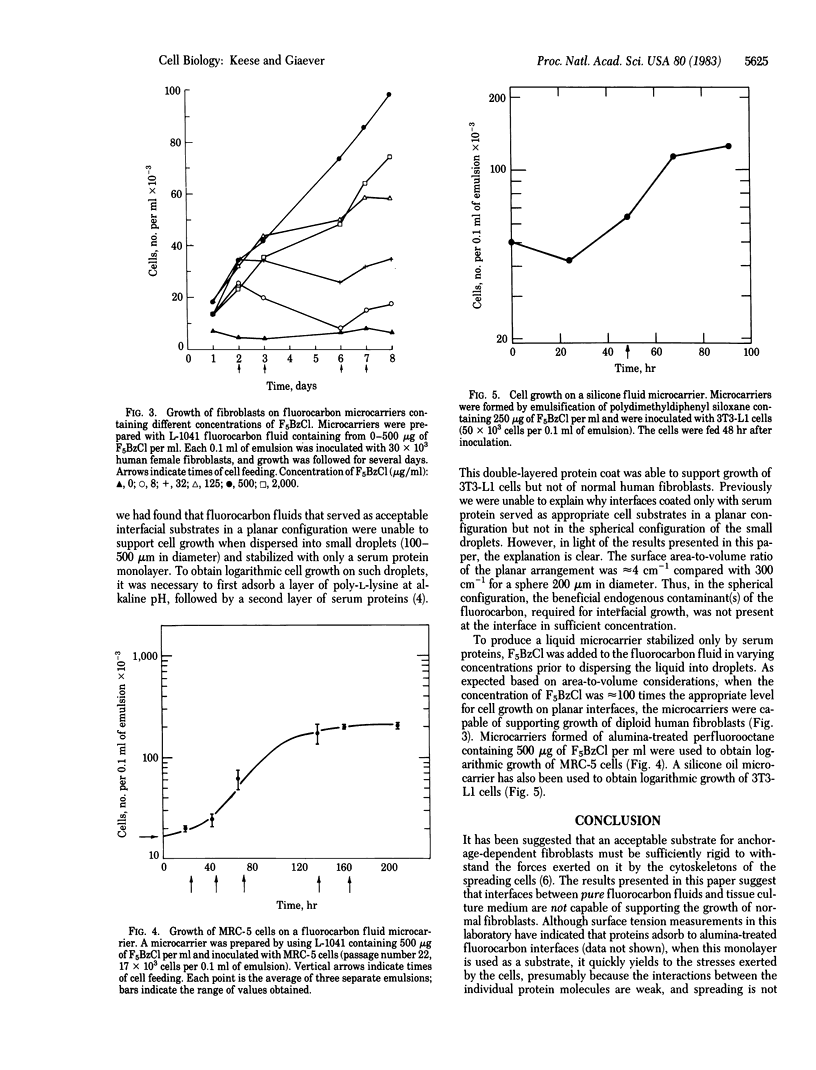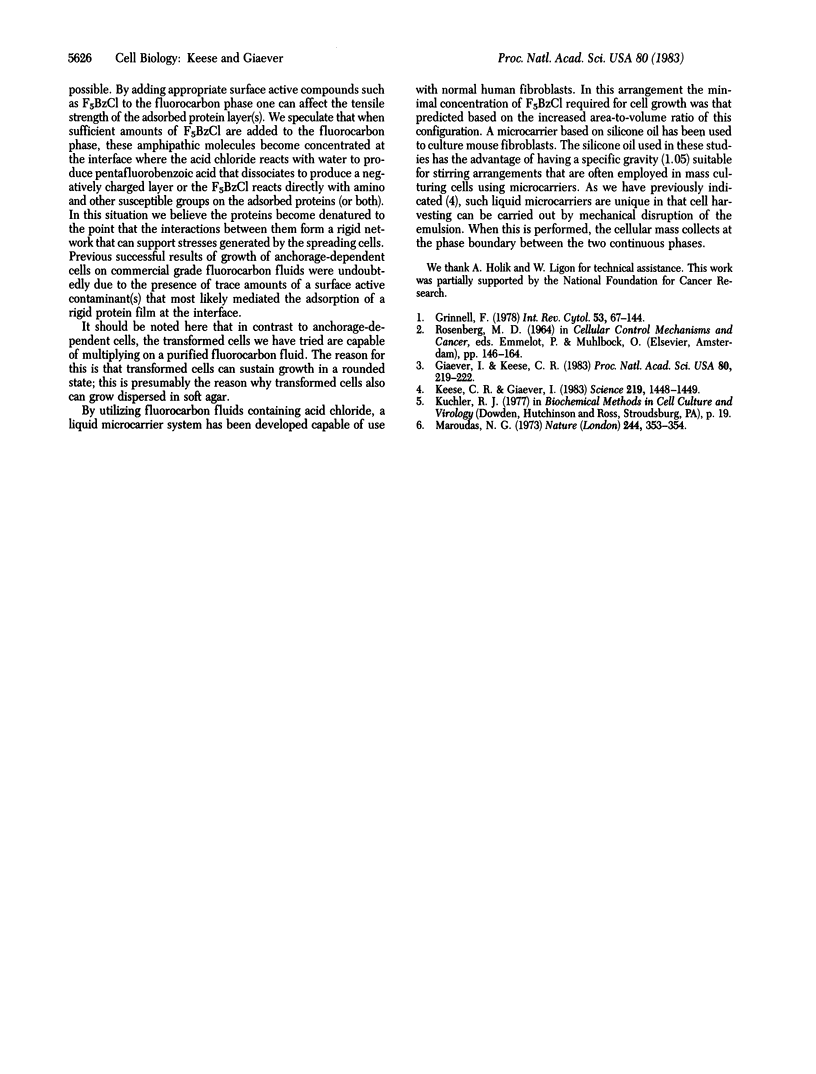Abstract
Anchorage-dependent fibroblasts can be cultured by using as a substrate the protein layer that spontaneously forms at the liquid-liquid interface between fluorocarbon fluids and tissue culture medium. For this novel substrate to be effective in supporting confluent cell layers, the protein monolayer must support the stresses exerted by spreading fibroblasts. The composition of the fluorocarbon fluid has a significant effect on the strength of the protein layer and, thus, on the patterns of cell growth. Evidence is presented demonstrating that a protein film, sufficiently strong to support cell growth, does not occur on purified fluorocarbon fluids but requires the presence of trace amounts of polar, surface active compounds. By the addition of small quantities of pentafluorobenzoyl chloride to alumina-treated fluorocarbon fluids, excellent interfacial substrates can be produced. We have applied this understanding to produce a liquid microcarrier system capable of general use with a variety of cells, including human fibroblasts. A microcarrier in which the fluorocarbon is replaced with polydimethyldiphenyl siloxane is also described.
Keywords: protein adsorption at interfaces, fluorocarbon and silicone fluid substrates, liquid microcarriers
Full text
PDF




Images in this article
Selected References
These references are in PubMed. This may not be the complete list of references from this article.
- Giaever I., Keese C. R. Behavior of cells at fluid interfaces. Proc Natl Acad Sci U S A. 1983 Jan;80(1):219–222. doi: 10.1073/pnas.80.1.219. [DOI] [PMC free article] [PubMed] [Google Scholar]
- Grinnell F. Cellular adhesiveness and extracellular substrata. Int Rev Cytol. 1978;53:65–144. doi: 10.1016/s0074-7696(08)62241-x. [DOI] [PubMed] [Google Scholar]
- Keese C. R., Giaever I. Cell growth on liquid microcarriers. Science. 1983 Mar 25;219(4591):1448–1449. doi: 10.1126/science.6828872. [DOI] [PubMed] [Google Scholar]
- Maroudas N. G. Chemical and mechanical requirements for fibroblast adhesion. Nature. 1973 Aug 10;244(5415):353–354. doi: 10.1038/244353a0. [DOI] [PubMed] [Google Scholar]







